Half of my heart is in Havana
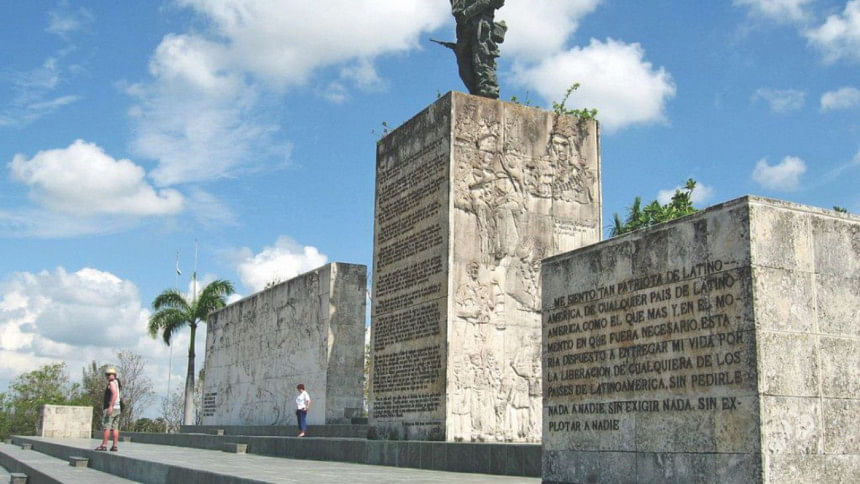
When I told my bosses I was taking off to travel to Cuba, their first response was "Tell us if you're stuck in Guantanamo". All jokes aside, when people think of Cuba, they think of Frank Sinatra, they think of classic cars and flamenco dancers, and now, they probably think of the "Havana" song. And, of course, they think of socialism.
I based my expectations of Cuba on my experience in Colombia. I imagined breezy nights and rustled leaves in the wind as we danced to jazz. This perception was combined with what I had come to know of Cuba itself: that it was a time capsule to a previous era. Romantic as it might sound, in reality this—was actually a result of the economic trade embargo forced on the nation by the United States.
Most of the products we saw in Cuba had American labels on it. My first host explained to me that goods are exchanged not just between a producer and consumer, but several other "middle men" who make an additional profit before goods reach the island. This raises the price of all commodities, and creates a limitation in the distribution sphere of the socialist country because of hiked costs. A United Nations agency stated that US trade embargo had cost Cuba's economy $130 billion over nearly six decades—and you can see its effects anywhere you go in the country.
The island itself is beautiful. The roads are well paved and travelling between the cities and towns in Cuba is easy and commuter-friendly, whether by bus or taxi. Safety was not an issue—but being hustled was.
Hustling tourists is a career in Havana. You'll always find people asking you if you need them to show you a spot to eat or take you to a dance club. The trick is they go with you and you pay for everything—you're a tourist, after all, and they are looking at you like an ATM (Cha-Chinngg!). Average salaries range from USD 10 to 18, and to have cash in Cuba means you having purchasing power beyond your ration list. You can buy the fake Yeezys, chicken, and more milk. A hustler could be a woman who would find you, strike up a conversation, and try to convince you that they did not need anything. They'll take you to what you're looking for and then inevitably churn the classic "my child needs milk, I need money". After you give her a donation—which is not much at all—you'll inevitably see her on your way back home at 3 am without any rush to find herself home, still hustling.
This is no new experience for anyone who has been in a poverty-stricken part of the world where you have to hustle. The thing about Cuba is that you really don't have to hustle to survive; you hustle for more than you're given—which is never enough.
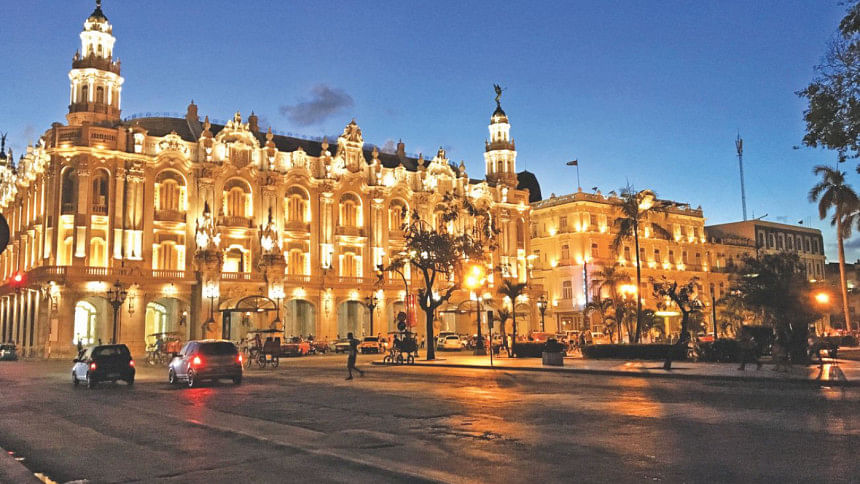
Hustling, for many, is a path to self-preservation and improvisation, but not all Cubans seek funds out that way. My favourite human exchange was with an 80-year old man named Carlos Fernandez. He tried to sell us communist workers' newspapers for 25 cents. We had gotten a few already and brushed him off when he approached us because of our frustration with being hustled for money. He must've known this because he disarmed us with a joke and a smile that explained the precise wrinkles which stretched across his brow. They were wrinkles of joy. This drew us to him.
He was a retired education minister who lived for the revolution. He cherished what it did for the people of Cuba, and how it freed people's minds. He joked about overweight husbands and beautiful Cuban women being the contradiction remaining in the country. His spirit didn't seem confined at all to his aging body. He spoke of his wife and how he loved her, and what motivates him to go around selling newspapers after holding an esteemed position in the revolutionary Cuban government. It seemed to be a paradox: how could a man who had played such a big role now settle for selling newspapers? But this is what made him the beautiful old man that I'll never forget: it was humility and purpose that shone in his eyes. He was above nothing. Cubans are generally this way too—a taxi driver will have a law degree, a waiter will have studied medicine. Cubans amongst themselves dignify one another. If there's anything the revolution seems to have cultivated, it's an empowerment of the marginalised.
Havana is very different from the rest of Cuba. The city hosts 20 percent of the Cuban population and it's where the main tourism sector lies, especially within Old Havana (Habana Vieja). Habana Vieja feeds the thirst tourists crave. The flamenco dancers, Hemingway's residence and the brightly coloured walls of Spanish colonialism are all well preserved thanks to government funding. The contrast is visibly apparent. While you have locals being told there is no cheese in the market and beef has not been available for years, the hotels are filled with fresh cheese, steak, smoked salmon, catering to the Canadian and European palette.
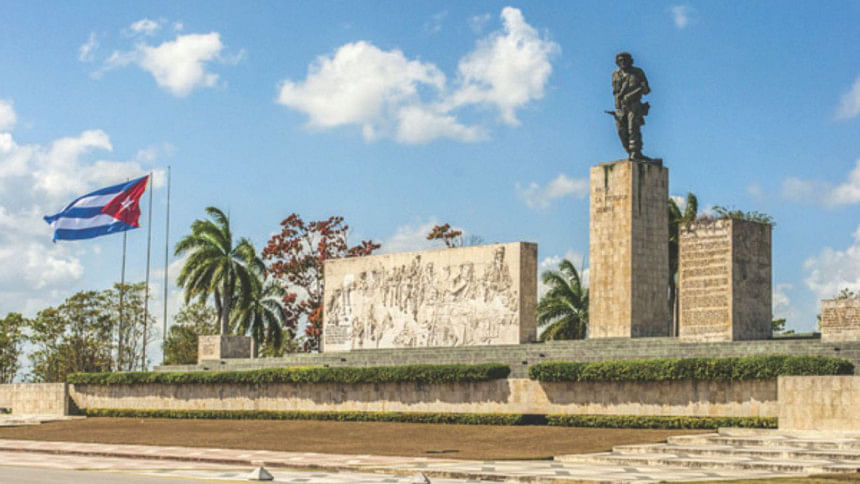
In Havana, art is hung for sale in every other window along the tight cobblestone streets. Saturated images of Che Guevara and classic cars hang on shop walls that thrive on the souvenir driven need of tourists to prove they were there. The people in Cuba have mastered replicating paintings with ease, but if you go near the only mosque in Old Havana past the coconut stand there are two old men who sell original paintings and do it more for the art than the sale. There are people like this all over Cuba—the catch is to find them. And once you do, keep in mind, don't haggle too much for good art.
While on the subject of art, if you've read any Cuban travel blogs you've definitely been told to go to Fábrica de Arte Cubano (FAC) in Vedado and yes, it is worth ALL the hype. It is by far one of the most unique places you can visit if you want a feel for the artistic and musical talents of Cubans. The FAC is a youthful innovation and a sign that Cuba isn't stuck in time. It is moving forward, and it will move forward. The exhibits are critical of the current system and a lot of the pieces are satirical. Make sure you pay for food/drinks before you go to the main exit in order to avoid the long line.
You can take a taxi from Old Havana to the FAC. I personally walk everywhere when I travel so it's a hike from Old Havana. There you see crowds of people ritualistically gathered every day and night with radios in shopping trolleys, men selling popcorn while children run around next to inebriated couples listening to the waves crash back and forth on the deteriorating walls protecting the island. Tourists, Cubans, black, white, French, American—people from all over gathered till sunset, and then sunrise.
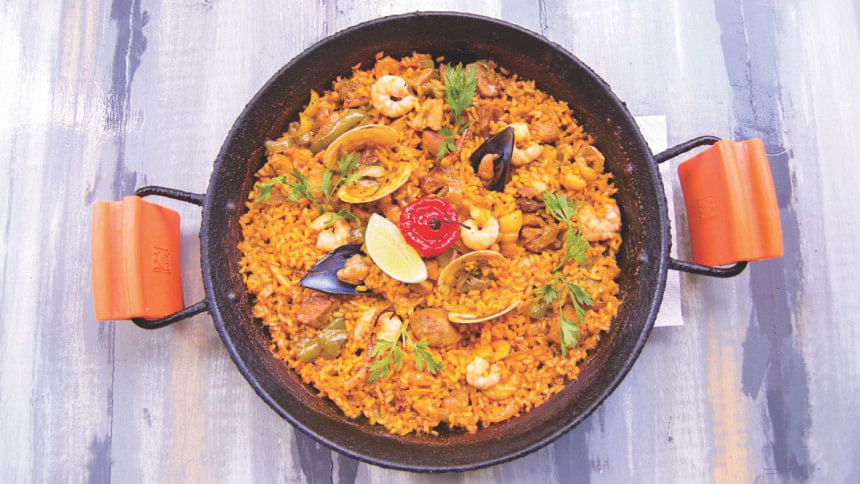
While in Vedado, there are restaurants in residential buildings where you'll see wealthy French tourists order everything under the embargo list. Vedado is a place where I would prefer eating all my meals while in Havana because I too am privileged and a brat when it comes to food. Aside from the amazing breakfasts my host family made and after trying two dollar meals at the local cafeterias, my South Asian palette couldn't handle the lack of seasoning. I needed seasoning but there's always a ration for it that local non-touristy restaurants had to accommodate. While looking for an Airbnb with no minutes on my internet cards, my group and I ran into the restaurant Razones on our second day in Cuba (yes, I lasted one day without salt). It became the lunch/dinner/dessert spot for the whole trip. Best hugo de pina (pineapple juice) ever! Just go ahead and order two at a time. Just save yourself the trouble and do it. Don't worry about the raised eyebrows by the waiters and confirm their confusion that they heard right.
Vedado is also where the bus station is located. You can haggle your way to rent a private car to take you to different towns and cities (which works if you're in a group of four or more). From here we took the bus to Santa Clara. In this historically significant ghost town, tourists pay homage to Che Guevara in a mausoleum dedicated to the fallen of the Cuban Revolution. The Santa Clara Hotel still has the bullet holes from the battle with Batista's army, which feels slightly larger than life. Next to the mausoleum there was a museum dedicated to the life of Che Guevara.
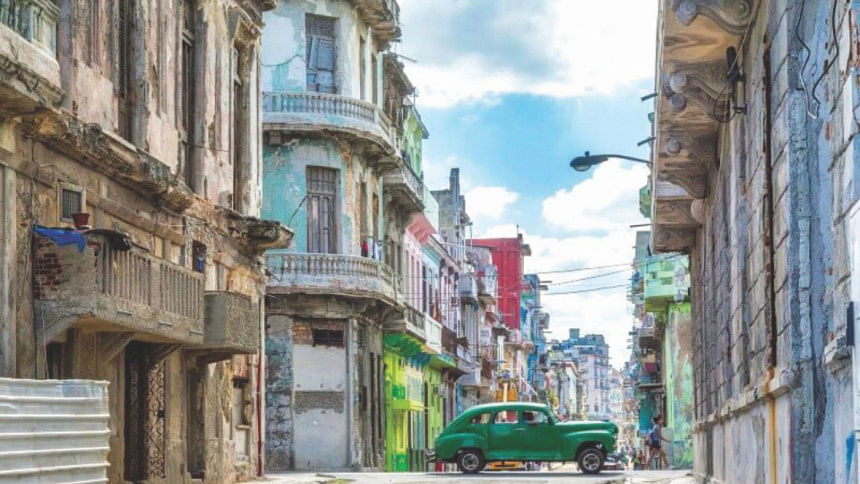
My favourite part of this little town was the live music in this bar down the road from the Santa Clara hotel. It's crowded with locals and tourists alike salsa dancing, getting lost in the music and the frequent breeze. This is where you strike up a conversation with strangers, get to know their back story, knowing full well by tomorrow you'll never see them again, but hey you shared this fading joyous moment.
But a walk away from the pho-touristy section of Santa Clara drew us one step closer to reality. A lot of the streets weren't paved and walking and horse carriages were the main forms of transportation. Children played soccer and tag in the street amidst the occasional destroyed building. Eyes gazed toward us as outsiders from a different world.
The milk given to us at the bed and breakfast in Santa Clara was from a child's milk ration. But the truth is the luxury for us was a necessity for the child, and we received the milk not knowing this was what small business owners had to do to serve their clientele. It's a stark, ugly reality to encounter. You can't buy milk because it's not sold everywhere. There is a limited total amount divvied up, and it provides context for how milk for a tourist's coffee is directly yanked from a family's ration for their child's growth. Similarly, the aspiration of socialism is yanked from Cuba by larger, more economically powerful countries.
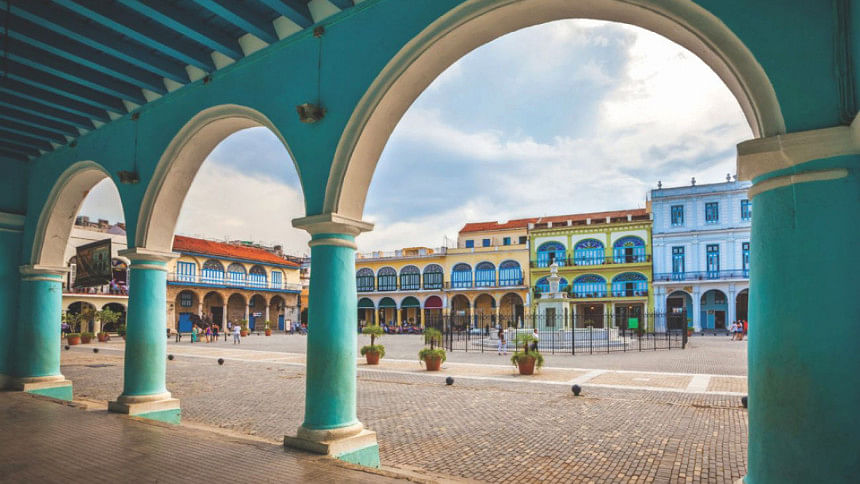
Visiting Cuba isn't something you can do in just a week and writing about Cuba isn't something you can do in a few words. It's a conversation of political history, tales of migration, and the creativity that arises from constraints. As with everything and anything, the country is changing. If you are travelling to Cuba, prioritise what is important to you or plan like hell. There are the beaches of Trinidad, the mountains of Viñales, and of course, more of Havana. Always stop to ask the old man selling newspapers for a quarter, his story, because there's so much more to Cuba than the tourist spots.
Place to eat: Razones: Calle F entre 5 y 3, Casa # 63 | El Vedado-piso 2, Havana, Cuba
Place to pray: Abdallah Mosque
Book to read: Reminiscences of the Cuban Revolutionary War by Che Guevera
Place to stay: Habitacion Don Pepe
Place to dance: FÁBRICA DE ARTE CUBANO (www.fac.cu)
Takmila Chowdhury is a researcher at Rutgers University.




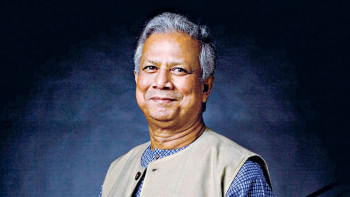
Comments